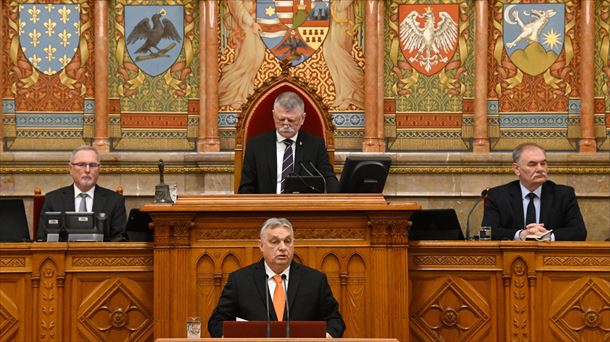In his city of Diyarbakir, in southeastern Turkey, many buildings have been reduced to ruins, housing many of the millions of people who have fled war and poverty in neighboring Syria.
Tulin Akkaya was abruptly awakened by Turkey’s worst earthquake in nearly a century, when a second jolt sent her running into the street. “I’m very scared. I felt (the aftershock) very strongly because I live on the top floor,” said the 30-year-old housewife. “We ran away in a panic. It was almost the same as the early morning earthquake. Now I can’t go back to my apartment, I don’t know what will happen next,” he added.
In his southeastern city of Diyarbakir, many buildings have been reduced to ruins, home to many of the millions of people who have fled war and poverty in neighboring Syria. The same scenes of devastation stretch across the main border towns of both countries following the magnitude 7.8 quake that struck before dawn.
The aftershock had a magnitude of 7.5, something that scientists say only occurs about 20 times a year worldwide. Authorities estimate the death toll at more than 2,300. Authorities counted more than 50 aftershocks in the first 10 hours after the initial quake and warned they would continue for many days. Several buildings collapsed both in Diyarbakir and nearby towns.
The second major shock came just as the survivors began returning to their homes to collect supplies that could help them through the cold night ahead. Most of the region was without gas or electricity. “It’s a seismic zone, so I’m used to shaking,” said reporter Melisa Salman, who lives in Kahramanmaras, the quake’s epicenter, some 60 km from the Syrian border. “But it’s the first time we’ve experienced something like this,” said the 23-year-old. “We thought it was the apocalypse.” “We have been gone since half past four in the morning. It is raining, but no one dares to return home for fear of new aftershocks,” he added.
Although the ground does not stop shaking, the rescue teams, often supported by the local population, continue to search for victims. A six-year-old girl was found alive after hours of work by lifeguards assisted by her father. Three other children were rescued from the rubble of a completely derelict building in Kahramanmaras.
“I was able to save three people. But I also found two bodies. I can’t go home. I will stay in case they need me,” said Halis Aktemur. This 35-year-old man came to offer his help to rescue teams working in the ruins of a building in Diyarbakir. Some establishments, such as gyms or reception rooms, welcome people who cannot return home.
Several NGOs have confirmed the mobilization of troops and resources to assist the victims. “All our teams are preparing to respond by the time,” Save the Children said through its account on the social network Twitter, highlighting that “thousands of boys and girls have been forced to leave their homes on a freezing night with no shelter to have”. against a backdrop of “frosty weather and blizzards.”
Médecins Sans Frontières (MSF) has pointed out that it is “in close contact with the authorities in northwestern Syria and southern Turkey to provide better support according to their needs and to support the people affected by the earthquake” . Médicos del Mundo has also focused on the fact that the latest emergency is contributing to the crisis. It plans to distribute basic necessities and healthcare products once it identifies the most urgent deficiencies, in line with Oxfam, which has confirmed the launch of an emergency aid to help the thousands of victims.
Source: La Verdad
I am an experienced and passionate journalist with a strong track record in news website reporting. I specialize in technology coverage, breaking stories on the latest developments and trends from around the world. Working for Today Times Live has given me the opportunity to write thought-provoking pieces that have caught the attention of many readers.



